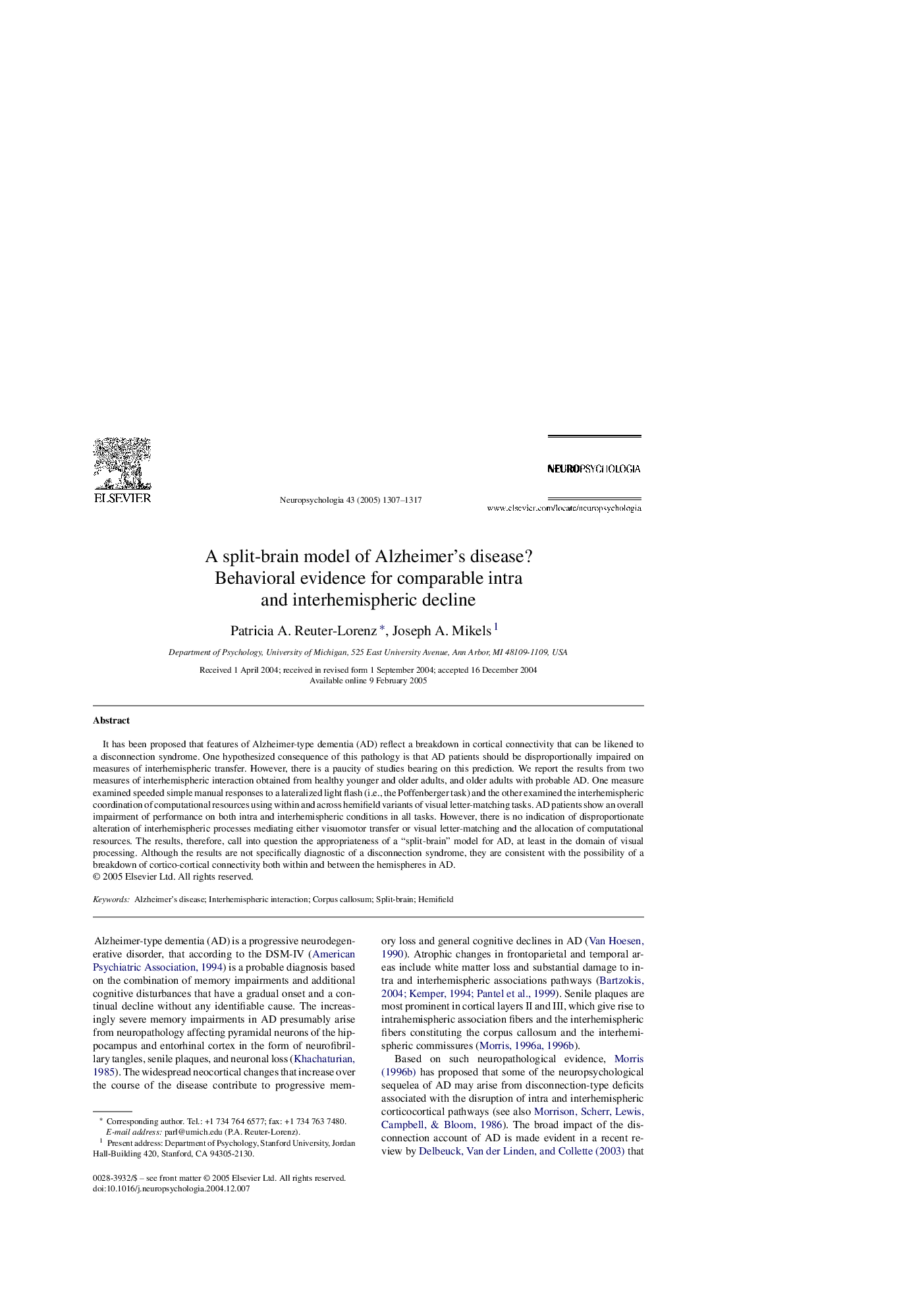| Article ID | Journal | Published Year | Pages | File Type |
|---|---|---|---|---|
| 10467335 | Neuropsychologia | 2005 | 11 Pages |
Abstract
It has been proposed that features of Alzheimer-type dementia (AD) reflect a breakdown in cortical connectivity that can be likened to a disconnection syndrome. One hypothesized consequence of this pathology is that AD patients should be disproportionally impaired on measures of interhemispheric transfer. However, there is a paucity of studies bearing on this prediction. We report the results from two measures of interhemispheric interaction obtained from healthy younger and older adults, and older adults with probable AD. One measure examined speeded simple manual responses to a lateralized light flash (i.e., the Poffenberger task) and the other examined the interhemispheric coordination of computational resources using within and across hemifield variants of visual letter-matching tasks. AD patients show an overall impairment of performance on both intra and interhemispheric conditions in all tasks. However, there is no indication of disproportionate alteration of interhemispheric processes mediating either visuomotor transfer or visual letter-matching and the allocation of computational resources. The results, therefore, call into question the appropriateness of a “split-brain” model for AD, at least in the domain of visual processing. Although the results are not specifically diagnostic of a disconnection syndrome, they are consistent with the possibility of a breakdown of cortico-cortical connectivity both within and between the hemispheres in AD.
Related Topics
Life Sciences
Neuroscience
Behavioral Neuroscience
Authors
Patricia A. Reuter-Lorenz, Joseph A. Mikels,
